-
 Known in Australia for his iconic role in To The Manor Born, Peter Bowles has had a very rich and lively acting career, also playing in such well known series as The Saint, The Avengers and The Prisoner. His autobiography is full of entertaining stories featuring Rex Harrison, Richard Burton, Albert Finney, Marlon Brando, Alfred Hitchcock and many other names of the stage and screen. Illustrated with black and white and colour photographs.
Known in Australia for his iconic role in To The Manor Born, Peter Bowles has had a very rich and lively acting career, also playing in such well known series as The Saint, The Avengers and The Prisoner. His autobiography is full of entertaining stories featuring Rex Harrison, Richard Burton, Albert Finney, Marlon Brando, Alfred Hitchcock and many other names of the stage and screen. Illustrated with black and white and colour photographs. -
 Clive James began keeping a verse diary for 1982 and recounts the year - his own and world events - in verse! Everything gets a mention - from Maggie Thatcher to the birth of Prince William, Prince Andrew's pursuit of Koo Stark, the ongoing Lebanan/Israel conflict, the invasion of the Queen's bedroom in the small hours by Michael Fagan and the Falklands War.
Clive James began keeping a verse diary for 1982 and recounts the year - his own and world events - in verse! Everything gets a mention - from Maggie Thatcher to the birth of Prince William, Prince Andrew's pursuit of Koo Stark, the ongoing Lebanan/Israel conflict, the invasion of the Queen's bedroom in the small hours by Michael Fagan and the Falklands War. -
 This memoir, which Gypsy began as a series of pieces for The New Yorker, contains photographs and newspaper clippings from her personal scrapbooks and an afterword by her son, Erik Lee Preminger. By turns touching and hilarious, Gypsy describes her childhood trouping across 1920s America on the vaudeville circuit through to her rise to stardom as The Queen of Burlesque in 1930s New York - where gin came in bathtubs, gangsters were celebrities, and Walter Winchell was king. Her story features outrageous characters - among them Broadway’s funny girl, Fanny Brice, who schooled Gypsy in how to be a star; gangster Waxy Gordon - who bears an intriguing resemblance to Al Capone - who paid for her to have her teeth fixed; and her indomitable mother, Rose, who lived by her own version of the Golden Rule: “Do unto others … before they do you.” And here's a tale from her revue days: The manager had advertised the show as 'fifty beautiful girls, 45 glamorous costumes... Lee says, "And I was the one that convinced the customers that I was the other five girls!" With black and white photographs - and here's what some other readers thought: https://www.goodreads.com/book/show/143890.Gypsy?from_search=true&from_srp=true&qid=mqwbhqxEnt&rank=1
This memoir, which Gypsy began as a series of pieces for The New Yorker, contains photographs and newspaper clippings from her personal scrapbooks and an afterword by her son, Erik Lee Preminger. By turns touching and hilarious, Gypsy describes her childhood trouping across 1920s America on the vaudeville circuit through to her rise to stardom as The Queen of Burlesque in 1930s New York - where gin came in bathtubs, gangsters were celebrities, and Walter Winchell was king. Her story features outrageous characters - among them Broadway’s funny girl, Fanny Brice, who schooled Gypsy in how to be a star; gangster Waxy Gordon - who bears an intriguing resemblance to Al Capone - who paid for her to have her teeth fixed; and her indomitable mother, Rose, who lived by her own version of the Golden Rule: “Do unto others … before they do you.” And here's a tale from her revue days: The manager had advertised the show as 'fifty beautiful girls, 45 glamorous costumes... Lee says, "And I was the one that convinced the customers that I was the other five girls!" With black and white photographs - and here's what some other readers thought: https://www.goodreads.com/book/show/143890.Gypsy?from_search=true&from_srp=true&qid=mqwbhqxEnt&rank=1 -
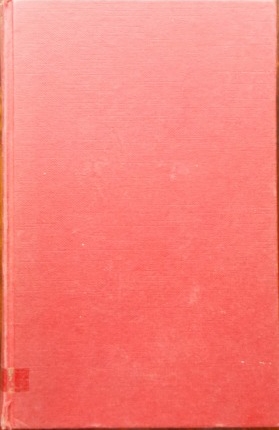
 The Dominance of the Duke of Northumberland. Edward VI (b. 1537; reigned 1547 - 1553) was not yet 10 years old when he ascended England's throne; the son of Henry VIII and Jane Seymour and England's first monarch to be raised as a Protestant. During his reign, the realm was governed by a regency council because he never reached maturity. The council was first led by his uncle Edward Seymour, 1st Duke of Somerset (1547–1549), and then by John Dudley, 1st Earl of Warwick (1550–1553), who from 1551 was Duke of Northumberland. Edward's reign was marked by economic problems and social unrest that in 1549 erupted into riot and rebellion. An expensive war with Scotland, at first successful, ended with military withdrawal from Scotland and Boulogne-sur-Mer in exchange for peace. The transformation of the Church of England into a recognisably Protestant body also occurred under Edward, who took great interest in religious matters. His short reign was, from start to finish, ruled by more than 30 counsellors and executors appointed by Henry VIII's will, causing a bitter power struggle. Edward VI named his cousin Lady Jane Grey as his successor, completely bypassing his half-sisters Anne and Elizabeth; Jane's reign lasted nine days before she was deposed by Mary.
The Dominance of the Duke of Northumberland. Edward VI (b. 1537; reigned 1547 - 1553) was not yet 10 years old when he ascended England's throne; the son of Henry VIII and Jane Seymour and England's first monarch to be raised as a Protestant. During his reign, the realm was governed by a regency council because he never reached maturity. The council was first led by his uncle Edward Seymour, 1st Duke of Somerset (1547–1549), and then by John Dudley, 1st Earl of Warwick (1550–1553), who from 1551 was Duke of Northumberland. Edward's reign was marked by economic problems and social unrest that in 1549 erupted into riot and rebellion. An expensive war with Scotland, at first successful, ended with military withdrawal from Scotland and Boulogne-sur-Mer in exchange for peace. The transformation of the Church of England into a recognisably Protestant body also occurred under Edward, who took great interest in religious matters. His short reign was, from start to finish, ruled by more than 30 counsellors and executors appointed by Henry VIII's will, causing a bitter power struggle. Edward VI named his cousin Lady Jane Grey as his successor, completely bypassing his half-sisters Anne and Elizabeth; Jane's reign lasted nine days before she was deposed by Mary. -
 This book is described as expertly informative for the intending tourist or the armchair tourist. The magnetic fields of Denmark, Norway and Sweden are visited as well as the less-trodden ways of Finland, Iceland and Greenland. The author is credited with a good eye for spectacular natural phenomena: the fire and snow in Iceland, Greenland's icy mountains, water, islands and sky as well as an interest in historical entertainments. From Kirkus Reviews: "The solid information outweighs the cafe chatter. However, the author cannot resist some sniggering appreciations of sex mores in Sweden and Denmark, which leads to an inane 'interview' with a quartet of Swedish damosels and a happy view of the nude bathing of a Finnish poet's wife. " Illustrated with numerous colour and black and white photographs.
This book is described as expertly informative for the intending tourist or the armchair tourist. The magnetic fields of Denmark, Norway and Sweden are visited as well as the less-trodden ways of Finland, Iceland and Greenland. The author is credited with a good eye for spectacular natural phenomena: the fire and snow in Iceland, Greenland's icy mountains, water, islands and sky as well as an interest in historical entertainments. From Kirkus Reviews: "The solid information outweighs the cafe chatter. However, the author cannot resist some sniggering appreciations of sex mores in Sweden and Denmark, which leads to an inane 'interview' with a quartet of Swedish damosels and a happy view of the nude bathing of a Finnish poet's wife. " Illustrated with numerous colour and black and white photographs. -
 From the moment of his accession to the close of his life, King George VI (b. 1895; reigned 1936 - 1952) was faced with a series of major emergencies - the aftermath of the abdication, the Czechoslovak crisis, the six searing years of war, followed by the grim austerity and grave problems of the post-war reconstruction period. In all these vital events the King played his own considerable part with an outstanding devotion to duty, sparing himself nothing and eventually succumbing to the strain of the burden of his office.Almost 900 pages of detailed research including genealogical charts and black and white photographs.
From the moment of his accession to the close of his life, King George VI (b. 1895; reigned 1936 - 1952) was faced with a series of major emergencies - the aftermath of the abdication, the Czechoslovak crisis, the six searing years of war, followed by the grim austerity and grave problems of the post-war reconstruction period. In all these vital events the King played his own considerable part with an outstanding devotion to duty, sparing himself nothing and eventually succumbing to the strain of the burden of his office.Almost 900 pages of detailed research including genealogical charts and black and white photographs. -
 The story of the greatest exploratory expedition ever performed in Man's history. It started in Melbourne; a convoy of sixteen men, twenty-four camels, innumerable pack-horses and a number of wagons carrying 20 tons of supplies. It ended with two exhausted, near-starving men, the leader and his second in command, deep in an impenetrable mangrove swamp on the edge of the Gulf of Carpentaria. Then began the long return trek, through swamp and desert, tormented by thirst and near starvation that reduced them to eating snakes and rats. Illustrated with sketches and photographs..
The story of the greatest exploratory expedition ever performed in Man's history. It started in Melbourne; a convoy of sixteen men, twenty-four camels, innumerable pack-horses and a number of wagons carrying 20 tons of supplies. It ended with two exhausted, near-starving men, the leader and his second in command, deep in an impenetrable mangrove swamp on the edge of the Gulf of Carpentaria. Then began the long return trek, through swamp and desert, tormented by thirst and near starvation that reduced them to eating snakes and rats. Illustrated with sketches and photographs.. -

 The story of a nation: on the 1st day of the 20th century, the Commonwealth of Australia came into being. Drawing on sources as diverse as Alfred Deakin's notebooks, Nettie Palmer's letters and the diary of a bank clerk named George M'Clure, Souter describes the birth of such Commonwealth institutions and symbols as parliament, the high court, the army and navy, the flag, income tax, the coat of arms and Canberra. There are lively narrative portraits of the young Commonwealth's great public figures: Barton, Reid, O'Malley, Griffith, Isaacs, Fisher, Hughes, Mannix and Monash - as well as Tom Thick, a telegram boy in western Victoria; Ida Dawson, a governess at a homestead near Collarenebri; Shaw Neilson, a Wimmera bush worker and poet; and Snowy Howe, a young pearler who went from Broome to Gallipoli.There is a wide panorama from the South African Veldt to the Somme for the first Empire Day in 1905 to the slaughter of Gallipoli, from leisurely Edwardian cruises 'home' to Ross Smith's extraordinary London-Melbourne flight in 1919. This is the initiation of Australia.
The story of a nation: on the 1st day of the 20th century, the Commonwealth of Australia came into being. Drawing on sources as diverse as Alfred Deakin's notebooks, Nettie Palmer's letters and the diary of a bank clerk named George M'Clure, Souter describes the birth of such Commonwealth institutions and symbols as parliament, the high court, the army and navy, the flag, income tax, the coat of arms and Canberra. There are lively narrative portraits of the young Commonwealth's great public figures: Barton, Reid, O'Malley, Griffith, Isaacs, Fisher, Hughes, Mannix and Monash - as well as Tom Thick, a telegram boy in western Victoria; Ida Dawson, a governess at a homestead near Collarenebri; Shaw Neilson, a Wimmera bush worker and poet; and Snowy Howe, a young pearler who went from Broome to Gallipoli.There is a wide panorama from the South African Veldt to the Somme for the first Empire Day in 1905 to the slaughter of Gallipoli, from leisurely Edwardian cruises 'home' to Ross Smith's extraordinary London-Melbourne flight in 1919. This is the initiation of Australia. -
 This biographical volume covers the lives great stage actors of the period 1740 - 1914 in six critical yet easy-to-read essays: David Garrick; John Kemble; Edmund Kean; W.C. Macready; Sir Henry Irving and Sir Johnston Forbes-Robertson. The author did not attempt to solve the question of what makes a great actor, but instead offers six kinds of greatness. A book for anyone interested in the magic, glamour and history of the stage. Illustrated with black and white sketches and photographs.
This biographical volume covers the lives great stage actors of the period 1740 - 1914 in six critical yet easy-to-read essays: David Garrick; John Kemble; Edmund Kean; W.C. Macready; Sir Henry Irving and Sir Johnston Forbes-Robertson. The author did not attempt to solve the question of what makes a great actor, but instead offers six kinds of greatness. A book for anyone interested in the magic, glamour and history of the stage. Illustrated with black and white sketches and photographs. -
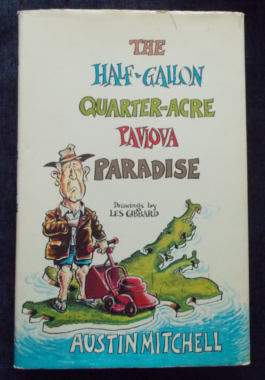 Mitchell, a former English resident of New Zealand, has written the funniest, frankest and most provocative book about New Zealand, its people, its institutions - in fact, the New Zealand way of life. His shafts, often barbed, a aimed freely at people and institutions but he is well-disposed to New Zealand and New Zealanders and perhaps the natural progression of events is that on his return to England, Mitchell became a Member for Parliament for Great Grimsby, 1977-2015.
Mitchell, a former English resident of New Zealand, has written the funniest, frankest and most provocative book about New Zealand, its people, its institutions - in fact, the New Zealand way of life. His shafts, often barbed, a aimed freely at people and institutions but he is well-disposed to New Zealand and New Zealanders and perhaps the natural progression of events is that on his return to England, Mitchell became a Member for Parliament for Great Grimsby, 1977-2015. -
 The zestful, indefatigable and irrepressible Frank Clune investigates great cities and small villages, as well as an Old Master or two and chats to a young mechanic - and that contributes to the diversity of his presentation of historical backgrounds and the contemporary feel of the countries he visits - or as he calls it, Random Rambles in Paris, Eire, Iceland, Vienna and Belgium. Illustrated with black and white photographs.
The zestful, indefatigable and irrepressible Frank Clune investigates great cities and small villages, as well as an Old Master or two and chats to a young mechanic - and that contributes to the diversity of his presentation of historical backgrounds and the contemporary feel of the countries he visits - or as he calls it, Random Rambles in Paris, Eire, Iceland, Vienna and Belgium. Illustrated with black and white photographs. -
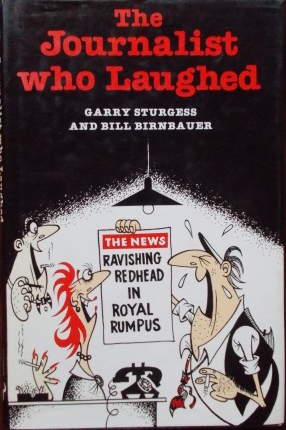 Journalists are an irreverent breed who must find humour in any event in order to stay sane. Here is a fabulously varied collection of stories from Frank and Kerry packer, Rupert Murdoch, Ita Buttrose, Ron Saw and many others on the world where truth is often stranger than fiction...When screen goddess Ava Gardner was in Melbourne for the filming of On The Beach (1959) a young reporter was told to get Miss Gardner's opinions of Melbourne, her latest romance, the film, etc. No interviews were being given by anyone and all the reporter could garner was a few scraps of information about the stars and the filming locations. So he concocted a story, the last paragraph being an alleged quote from Miss Gardner via a rumour at third hand from a usually reliable source: "On The Beach is a story about the end of the world and Melbourne sure is the right place to make it." The reporter fully expected that the editor would cut it, realising it was a practical joke. The 'quote' went viral world-wide and was included by by writers whenever mentioning Melbourne (or even Australia) for the next twenty years. In 1980 Miss Gardner was asked about the now-hackneyed quote. She said she couldn't remember saying it, but it was funny and she'd be happy to take the credit for it. The reporter - in 1982 - issued a formal confession and apology to Miss Gardner.
Journalists are an irreverent breed who must find humour in any event in order to stay sane. Here is a fabulously varied collection of stories from Frank and Kerry packer, Rupert Murdoch, Ita Buttrose, Ron Saw and many others on the world where truth is often stranger than fiction...When screen goddess Ava Gardner was in Melbourne for the filming of On The Beach (1959) a young reporter was told to get Miss Gardner's opinions of Melbourne, her latest romance, the film, etc. No interviews were being given by anyone and all the reporter could garner was a few scraps of information about the stars and the filming locations. So he concocted a story, the last paragraph being an alleged quote from Miss Gardner via a rumour at third hand from a usually reliable source: "On The Beach is a story about the end of the world and Melbourne sure is the right place to make it." The reporter fully expected that the editor would cut it, realising it was a practical joke. The 'quote' went viral world-wide and was included by by writers whenever mentioning Melbourne (or even Australia) for the next twenty years. In 1980 Miss Gardner was asked about the now-hackneyed quote. She said she couldn't remember saying it, but it was funny and she'd be happy to take the credit for it. The reporter - in 1982 - issued a formal confession and apology to Miss Gardner. -
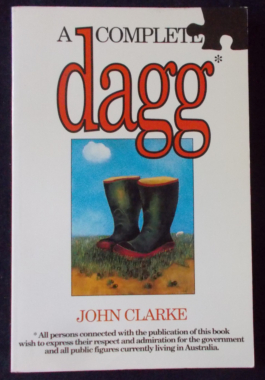 Complete dagg John 'Nobby' Clarke (1948-2017) claimed a PhD in Cattle and held important positions with Harrods, Selfridges and Easibind; was sacked by ABC Radio and worked for various defunct newspapers; he enjoyed such recreations as reading theological works and dog trials. His address was care of the people next door. (Or just pop it inside the door of fuse box for Friday collection.) He really was the complete dagg. Chapters include: Australia - A User's Guide; Celebrity Interviews - luminaries include the late Bob Hawke, Prince Charles and Meryl Streep; Farnarkeling; The Resolution of Conflict; Golf (extensively covered...) This Week On ABC Television; Australiaform; Australia And How To Repair It (with a section on Troubleshooting); Very Worrying Developments.
Complete dagg John 'Nobby' Clarke (1948-2017) claimed a PhD in Cattle and held important positions with Harrods, Selfridges and Easibind; was sacked by ABC Radio and worked for various defunct newspapers; he enjoyed such recreations as reading theological works and dog trials. His address was care of the people next door. (Or just pop it inside the door of fuse box for Friday collection.) He really was the complete dagg. Chapters include: Australia - A User's Guide; Celebrity Interviews - luminaries include the late Bob Hawke, Prince Charles and Meryl Streep; Farnarkeling; The Resolution of Conflict; Golf (extensively covered...) This Week On ABC Television; Australiaform; Australia And How To Repair It (with a section on Troubleshooting); Very Worrying Developments. -
 The colourful and exciting story of Australian aviation and the men who chanced their lives in the primitive 'box kites' and gliders that were literally made from wood, wire and fabric. Thanks to these men, it was not long before Australia was brought nearer to the rest of the world by spanning oceans and continents. With fabulous archival photographs.
The colourful and exciting story of Australian aviation and the men who chanced their lives in the primitive 'box kites' and gliders that were literally made from wood, wire and fabric. Thanks to these men, it was not long before Australia was brought nearer to the rest of the world by spanning oceans and continents. With fabulous archival photographs. -
 Bill Scott became a 'battler' after his hilarious discharge from the Royal Australian Navy in 1949, after which he sets off round Queensland to try his hand at many occupations: 'fail-safe' gold prospecting with his mate Johnny (not much gold but lots of fun and experience) ; copper mining in Mount Isa, described as a kind of 'Foreign Legion' existence where men didn't speak about their pasts; cane cutting, one of the hardest labour jobs at that time and finally becoming 'fireman' on the little steam locomotives that help collect the cane harvest and take it to the mills for crushing. And throughout, he meets a swag of colourful characters and intriguing adventures. A real life adventure. Apparently, this is not a book for the 'politically correct' reader.
Bill Scott became a 'battler' after his hilarious discharge from the Royal Australian Navy in 1949, after which he sets off round Queensland to try his hand at many occupations: 'fail-safe' gold prospecting with his mate Johnny (not much gold but lots of fun and experience) ; copper mining in Mount Isa, described as a kind of 'Foreign Legion' existence where men didn't speak about their pasts; cane cutting, one of the hardest labour jobs at that time and finally becoming 'fireman' on the little steam locomotives that help collect the cane harvest and take it to the mills for crushing. And throughout, he meets a swag of colourful characters and intriguing adventures. A real life adventure. Apparently, this is not a book for the 'politically correct' reader. -
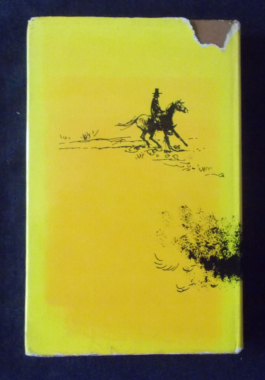
 Here is a roistering view of Australian from the time of the First Fleet onward, as seen by men and women who expressed their opinions of the country and each other in language forthright, abusive, wistful or cheerful. Part One is devoted to popular (and uniquely Australian) sayings, jests, rhymes, anecodotes and yarns...The bushman recounted, 'When I was doin' a bit o' grave diggin' at Guyra, it so was so perishin' cold there one winter we were forced to demand two weeks' notice of anyone who was goin' to die. It took us that long to dig the hole.' Part Two is Australian Perspectives 1788 - 1918: Farmer's Pride and Prisoner's Hell; The Southern El Dorado (includes a recipe for damper and Black Swans as Table Birds...); An Album of Victoriana; Land of Hope and Glory. You won't get anything more dinki-di than this volume.
Here is a roistering view of Australian from the time of the First Fleet onward, as seen by men and women who expressed their opinions of the country and each other in language forthright, abusive, wistful or cheerful. Part One is devoted to popular (and uniquely Australian) sayings, jests, rhymes, anecodotes and yarns...The bushman recounted, 'When I was doin' a bit o' grave diggin' at Guyra, it so was so perishin' cold there one winter we were forced to demand two weeks' notice of anyone who was goin' to die. It took us that long to dig the hole.' Part Two is Australian Perspectives 1788 - 1918: Farmer's Pride and Prisoner's Hell; The Southern El Dorado (includes a recipe for damper and Black Swans as Table Birds...); An Album of Victoriana; Land of Hope and Glory. You won't get anything more dinki-di than this volume. -
 As the 1940s came to a close, the dream factory of Hollywood was in turmoil: McCarthyism was a dark shadow, television had begun to make inroads and there was the realism of post-war society. But five young actors came west: James Dean; Rock Hudson; Montgomery Clift; Elizabeth Taylor and Natalie Wood. They became the idols of their generation. As well as their stories, this book encapsulates the glamour, the hype, the delusions and scandals that was the Hollywood of the Fifties. With black and white photographs.
As the 1940s came to a close, the dream factory of Hollywood was in turmoil: McCarthyism was a dark shadow, television had begun to make inroads and there was the realism of post-war society. But five young actors came west: James Dean; Rock Hudson; Montgomery Clift; Elizabeth Taylor and Natalie Wood. They became the idols of their generation. As well as their stories, this book encapsulates the glamour, the hype, the delusions and scandals that was the Hollywood of the Fifties. With black and white photographs.



